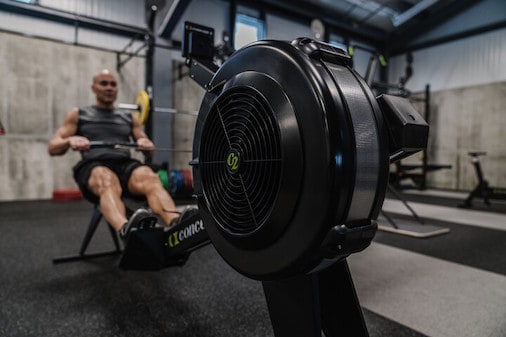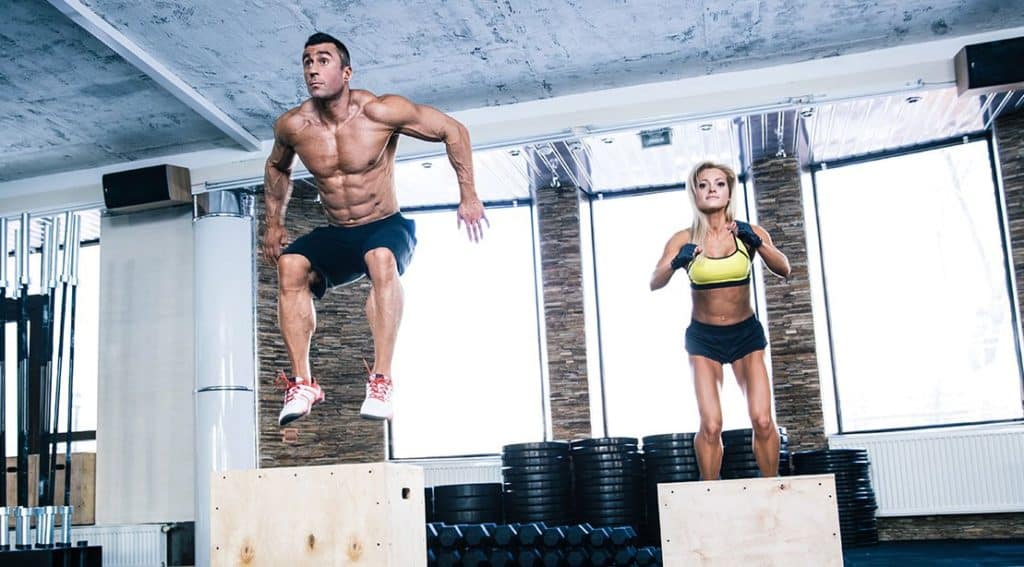
High intensity interval training is a form of continuous exercise that alternates between periods of high intensity activity and low intensity activity.
There’s no official construct as to the length and structure of a HIIT workout, it’s more about the principle of the high and low intensity circuit. Almost any exercise can be implemented in a HIIT routine.
While many people use HIIT as a form of cardiovascular exercise to burn fat, some wonder if it has muscle building qualities as well. Most people lift weights to build muscle, but it’s hard not to notice athletes in certain sports who have muscle mass. Yes, weight training makes up some of their routine, but the bulk of the training comes from these high intensity activities.
HIIT workouts are similar to resistance training in both workout intensity and type II muscle fiber activation. These fast twitch muscle fibers make up most of the muscle mass present in athletes with great physiques. While HIIT may not be the optimal way to induce maximum hypertrophy, it is still an effective way to build muscle.
The amount of muscle you can build with HIIT is based on training level and exercise selection. Novice trainees can build a considerable amount of muscle mass with HIIT since they are so sensitive to growth. As someone gets more advanced they will have a harder time since they are reaching their genetic muscular potential.
Genetic muscular potential is the total amount of muscle you can add to your frame naturally.
The one caveat for intermediate and advanced trainees when it comes to muscle building is if the HIIT exercise is a novel stimulus. In other words, if the individual has never done a particular exercise before, there is potential for growth. With the right workout programming, someone with a great deal of experience in the gym can still build muscle with HIIT.
How HIIT Builds Muscle
New muscle is built when the body adapts to a stimulus that challenges it. With resistance exercise, tiny microtears occur in the muscle fibers. The workout stimulus, or stress, creates these small tears which lead to inflammation. The muscle then adapts to this process by growing bigger and stronger.
In most cases, the resistance exercise that causes this process comes in the form of lifting weights. This can be done with free weights like dumbbells and barbells, machines, and cables. But this isn’t the only way to stimulate muscle growth.
With certain types of HIIT training, muscles can go through a similar growth process. Since HIIT is more about a workout style rather than specific exercises, the lines get blurry as to what constitutes HIIT. In a way, you could consider certain aspects of CrossFit to be a HIIT workout. And many CrossFit athletes have impressive physiques.
When it comes to building muscle, there is a certain threshold of intensity that must be met. Taking a walk around the block technically stimulates leg muscles, but not enough for any tangible hypertrophy. While it may not be the traditional method for building muscle, HIIT has an intensity great enough to stimulate it.
Choosing the right exercises is the key to optimizing muscle growth within a HIIT workout.

Best HIIT Exercises to Build Muscle
With some creativity, you can craft a routine using HIIT exercises that target every major muscle group. As mentioned, there is no clear definition as to what is considered a HIIT exercise. With that said, there are still a number of exercises that are staples in many HIIT routines.
Below is a list of common HIIT exercises, along with the muscles targeted. The muscles are ordered from the primary mover to secondary. This is not an all inclusive list, just exercises that are common and easy to implement into a routine.
| HIIT Exercise | Muscle(s) Targeted |
|---|---|
| Battle Ropes | Shoulders, Forearms |
| Rower | Back, Biceps |
| Burpees | Quadriceps, Hamstrings, Shoulders |
| Kettlebell Swings | Glutes, Hamstrings, Lower Back, Shoulders |
| Airdyne Bike | Shoulders |
| Box Jumps | Quadriceps, Hamstrings |
| Sprints | Quadriceps, Calves |
| Jumping Rope | Quadriceps, Calves |
| Boxing Heavy Bag Drills | Shoulders, Core |
The great thing about many of these exercises is that there is not a major eccentric load in the movement. The eccentric part of the exercise is the portion of the movement where the muscle is stretched, rather than contracted. Examples of this include lowering the bar to your chest during a bench press, or straightening your arm on a bicep curl.
The eccentric movement of an exercise is responsible for soreness, or DOMS, you feel in the days following a workout. The eccentric part of a HIIT workout isn’t that much. These are fast movements, often times only using bodyweight. They are not heavy, drawn out barbell bench presses. As a result, there shouldn’t be a tremendous amount of soreness following the workout (with the one exception being if you’re doing an exercise for the first time).
It’s a bit of a cliché, but the comparison of the sprinter’s body compared to the long distance runner’s body does hold merit. The sprinter’s workouts engage fast twitch muscle fibers far more, which is part of the reason why they’re able to develop a muscular physique.
That same idea translates to HIIT training. The intensity and fast twitch muscle fiber activation is enough to build muscle.
Hopefully this has mitigated any fear you may have if you were thinking about implementing some HIIT into your routine. Diversity and cross training are always a good idea when it comes to exercise. The more modalities you take part in, the more well-rounded and healthier you will be.
